Fylde, Lancashire
Up to 1834
Kirkham had a local workhouse from 1726. The town's records note: "22nd May, 1726 - Mem: That the town of Kirkham was summonsed from house to house and the inhabitants unanimously agreed to the setting up of a workhouse" (Porter, 1876). It was built on Back Lane, now Marsden Street, which runs parallel to Poulton Street.
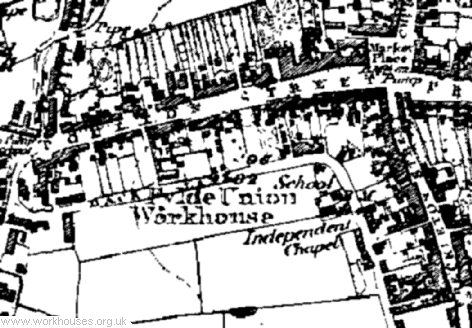
Fylde Kirkham site, 1844.
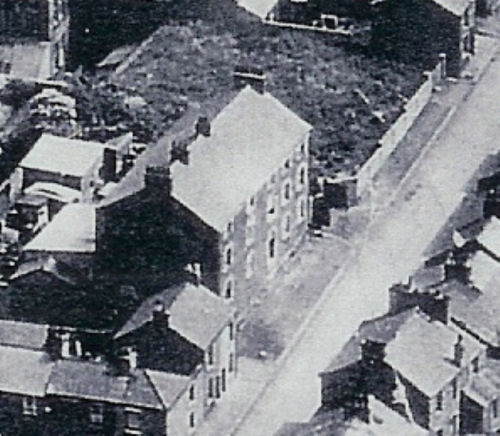
Kirkham parish workhouse, date unkown.
A parish workhouse also operated at Poulton-le-Fylde.
After 1834
The Fylde Poor Law Union was formed on 27th January 1837. Its operation was overseen by an elected Board of Guardians, 26 in number, representing its 24 constituent parishes as listed below (figures in brackets indicate numbers of Guardians if more than one):
County of Lancaster:
Bispham with Norbreck, Bryning with Kellamergh, Carleton, Clifton with Salwick, Elswick, Freckleton, Greenhalgh with Thistleton, Hardhorn with Newton, Kirkham (2), Layton with Warbreck,
Little Eccleston with Larbreck, Lytham, Marton, Medlar with Wesham, Mythrop, Newton with Scales, Poulton le Fylde (2), Ribby with Wray [Wrea], Singleton, Thornton, Treales Roseacre and Wharles,
Warton, Weeton and Preese, Westby with Plumpton.
Later Additions (from 1894): Blackpool, Fleetwood, St Anne's on the Sea.
The population falling within the Union at the 1831 census had been 15,930 with parishes ranging in size from Bryning with Kellamergh (population 164) to Kirkham (2,469).
The Kirkham Workhouse
Initially, the new Fylde Union took over the Kirkham parish workhouse, despite the pleas of Poulton-le-Fylde, the only other settlement in the Fylde to have a workhouse.
In 1843-4, a new workhouse was erected at the north side of Moor Lane in Kirkham. It was enlarged in around 1864 to house 250 paupers. The workhouse location and layout are shown on the 1893 map below.
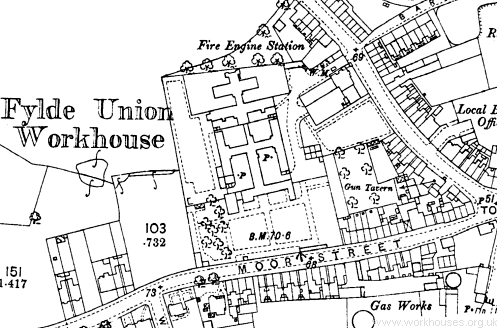
Fylde Kirkham workhouse site, 1893.
The building followed the popular square layout with the different classes of inmate accommodated in separate wings radiating from a central supervisory hub. An entrance and administrative block faced the road at the south. The structure at the north of the site may have been the workhouse infirmary.
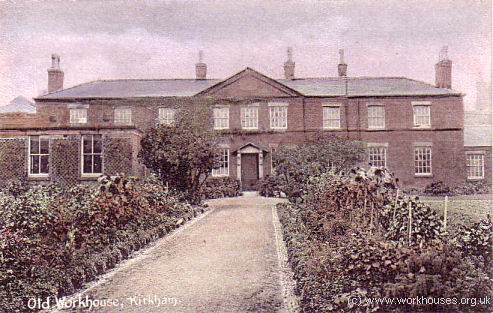
Fylde Kirkham workhouse from the south, c.1905
© Peter Higginbotham.
The Kirkham Cottage Homes
After the opening of a new workhouse at Medlar-with-Wesham in 1907, the old Kirkham workhouse buildings were used for a few years as a children's home and then demolished in around 1912. On 23rd July 1913, the foundation stone was laid for a new group of children's cottage homes being erected on the site. These consisted of three houses on Moor Street together with a superintendent's house on Station Road.
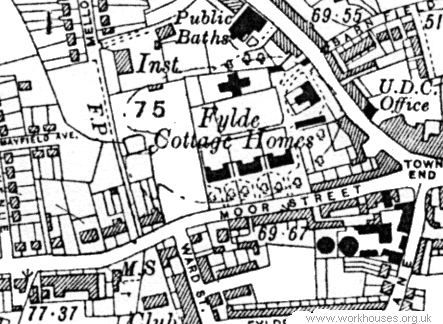
Fylde Kirkham site, 1932.
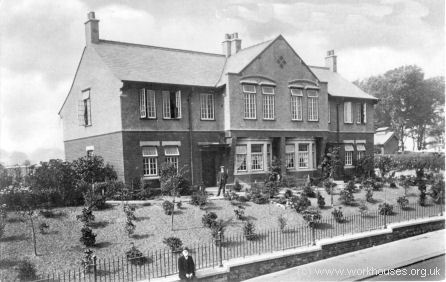
Kirkham Cottage Homes Superintendent's House, c.1915
© Peter Higginbotham.
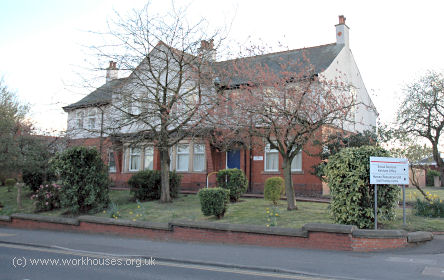
Kirkham Cottage Homes Superintendent's House from the north-east, 2005
© Peter Higginbotham.
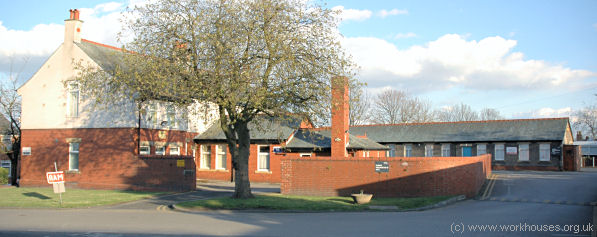
Kirkham Cottage Homes Superintendent's House from the north-west, 2005
© Peter Higginbotham.
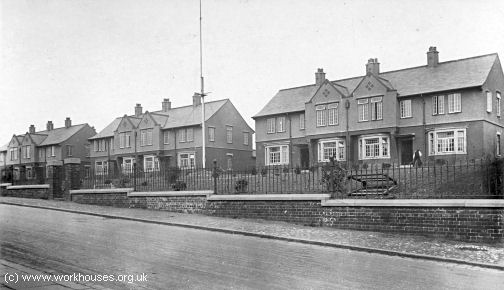
Kirkham Cottage Homes from the south-east, c.1915
© Peter Higginbotham.
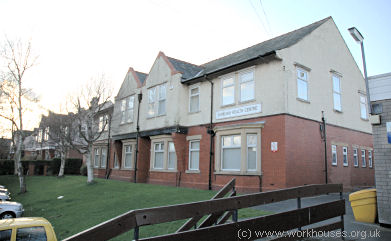
Kirkham Cottage Homes children's houses from the south-east, 2005
© Peter Higginbotham.
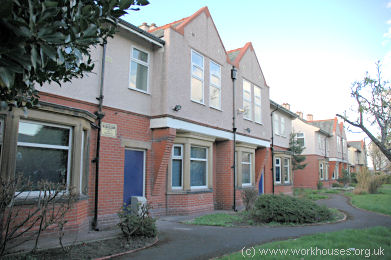
Kirkham Cottage Homes children's houses from the south-west, 2005
© Peter Higginbotham.
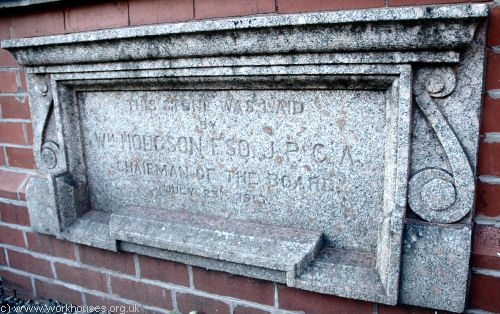
Kirkham Cottage Homes foundation stone, 2005
© Peter Higginbotham.
The former cottage homes are now occupied by a medical centre and offices for the local social services.
The Medlar-with-Wesham Workhouse
A new workhouse was erected in 1903-7 at Medlar-with-Wesham. It was designed on a pavilion plan by Charles S Haywood and Fred Harrison. Its location and layout are shown on the 1911 OS map below:
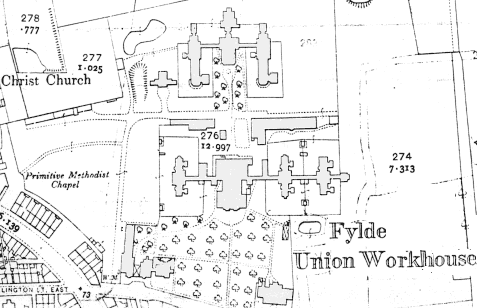
Fylde Medlar-with-Wesham site, 1911.
The opening of the workhouse on 27th March 1907 was recorded by The Builder magazine:
NEW WORKHOUSE, FYLDE. — On the 27th ult, the new workhouse for the Fylde Union was opened. The workhouse has been designed by and carried out under the superintendence of Messrs. Haywood & Harrison, architects, of Accrington and Lytham. It is built on the pavilion system, The accommodation is for 300 persons, exclusive of staff. In the centre is placed the administrative building, which consists of a central dining hall, with glazed brick walls, and open timbered pitch-pine roof, with kitchens, sculleries, store. rooms, etc., and a house for the master. To the right and left are the different pavilions, all communicating with the administrative block by a wide, covered corridor. the females being placed on the east side and the males on the west side. The able-bodied and aged inmates of both sexes will have for their accommodation two three-storied pavilions, with day-rooms and dormitories. A separate pavilion is provided for mothers and infants, and infirm females, and also a two-roomed cottage for married couples. To the rear of these are placed the laundry, bakery and boiler and engine and pumphouse. The infirmary buildings, consisting of a nurses' home, and two-story pavilions for males and females, occupy the most elevated position to the north of the site, and accommodation is provided for fifty patients of each sex. The vagrants' block, for twenty-five tramps, is placed at the entrance to the site, with porter's office and living rooms to the right and left, and commanding a view of the entrance-gates. In this block are placed the receiving-rooms-male and female & with day-rooms, bathrooms, and clothes stores, while a steam disinfector is also provided. The offices and board-room are contained in a block of buildings, comprising four large committee rooms and an entrance-hall. The outdoor relief office with its attendant waiting-rooms and conveniences is set back from the main block at the westerly end of the building, and at the opposite end is the registration office, with a strong-room. A feature is the water-tower, built for the purpose of utilising the supply of water obtained by the sinking of a well in the grounds. The heating throughout and the hot water supply for all purposes are worked from a central station, under the control of the resident engineer, and rotary pumps assist the circulation. All the different pavilions are in telephonic communication. The buildings are faced with Accrington red-pressed bricks, and stone dressings, and the work has been carried out by Mr. Sam Wilson, of St. Annes.
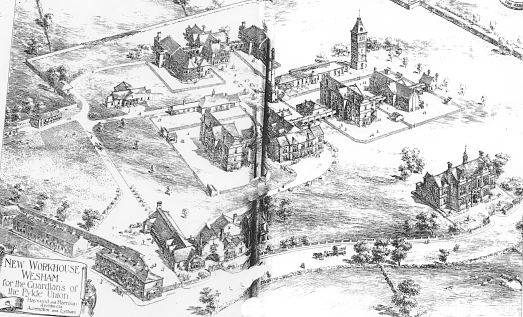
Fylde Medlar-with-Wesham site from the south-west, 1908.
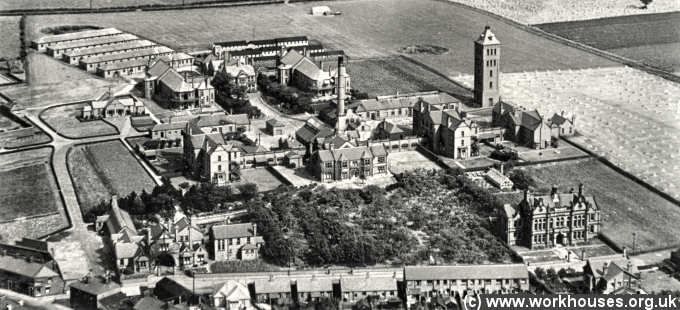
Fylde workhouse from the south-west, date unknown.
© Peter Higginbotham.
The board-room block, now demolished, stood at the south.
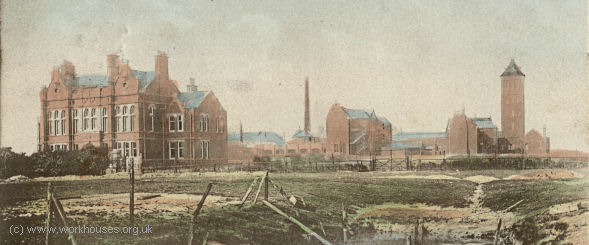
Fylde board-room block from the south-east, c.1907.
© Peter Higginbotham.
At the centre of the site was the administrative block which contained the Master's office at the front and the workhouse dining-hall and kitchen to the rear.
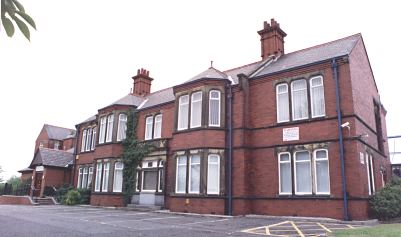
Fylde administrative block from the south-east, 2001.
© Peter Higginbotham.
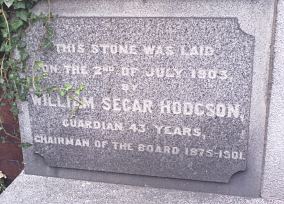
Fylde foundation stone, 2001.
© Peter Higginbotham.
To the east of the administrative block stood the accommodation block for able-bodied and aged females. Further east was a block for infirm females and mothers and infants.
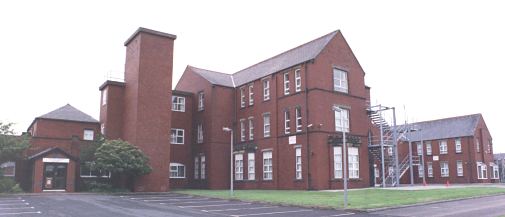
Fylde females block and mothers/infants/infirm block from the south-west, 2001.
© Peter Higginbotham.
Able-bodied and aged males were housed at west of the administrative block. The workhouse bakery and workshops, boiler house and laundry were placed at the rear.

Fylde bakery and workshops (left), boiler room (centre), and male block (right) from the east, 2001.
© Peter Higginbotham.
At the site-entrance to the south-east was an entrance archway with a porter's lodge and vagrants' ward. Only the western part remains.
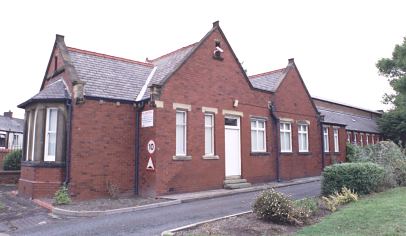
Fylde porter's lodge and vagrants' ward from the south-east, 2001.
© Peter Higginbotham.
The workhouse infirmary stood at the north of the site. It comprised a central nurses' home flanked by male and female pavilions to its west and east.
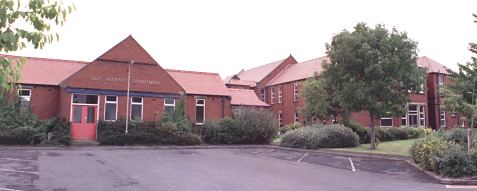
Fylde infirmary from the south-west, 2001.
© Peter Higginbotham.
During the First World War, the infirmary was used as a military hospital.
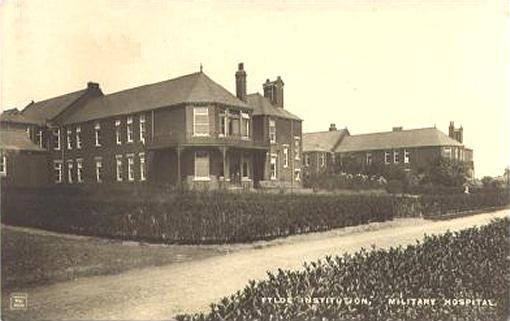
Fylde infirmary from the south-west, c.1918.
From 1904, to protect them from disadvantage in later life, the birth certificates for those born in the workhouse gave its address just as 1 Derby Road, Wesham.
The site later became Wesham Park Hospital but this has now closed. In 2001, the main workhouse blocks were still used as NHS Trust office accommodation.
The first union workhouse on Back Lane was demolished in the 1950s or 1960s.
Staff
Inmates
Records
Note: many repositories impose a closure period of up to 100 years for records identifying individuals. Before travelling a long distance, always check that the records you want to consult will be available.
- Lancashire Record Office, Bow Lane, Preston, Lancashire, PR1 2RE. Few local records survive — holdings include: Guardians' minutes (1845-1930).
Bibliography
- Porter, John (1876) History of the Fylde of Lancashire (Fleetwood, W. Porter and Son) [Chapter 16]
- Ramsbottom, Martin (1995) The Cottage Homes at Kirkham (Notes on Fylde History; 8, 1995)
- Ramsbottom, Martin (1995) Plus ca change? A consideration of the Theory and Practice of the Relief of Poverty from 1820 to 1850 together with a Case Study of the Fylde Area of Lancashire. (M.A. long essay. University of Central Lancashire)
- Ramsbottom, Martin (1996) Herry Goderynge's Pour Mayde - and others: a study of the relief of pauper children (M.A. Dissertation. University of Central Lancashire)
- Ramsbottom, Martin (2008) The Cottage Homes, Moor Street, Kirkham - reminiscences of some former residents. (Copies available at £1.95 from: The Scroll Bookshop, 66 Poulton Street, Kirkham, Lancashire PR4 2AH. Tel: 01772-686612)
- Shaw, Roland Cunlife (1947) Kirkham in Amounderness - the story of a Lancashire Community (Preston. R.Seed and Sons)
- Townsend, Michael (2020) The Fylde Guardians of the Poor and the Union Workshouse
- Williams, Gail E. (1973) The New Poor Law and its Administration in the Fylde after 1834. (B.A. long essay. Poulton-le-Fylde College)
Links
- None.
Acknowledgment
- Many thanks to Martin Ramsbottom for additional information on Kirkham.
Unless otherwise indicated, this page () is copyright Peter Higginbotham. Contents may not be reproduced without permission.


